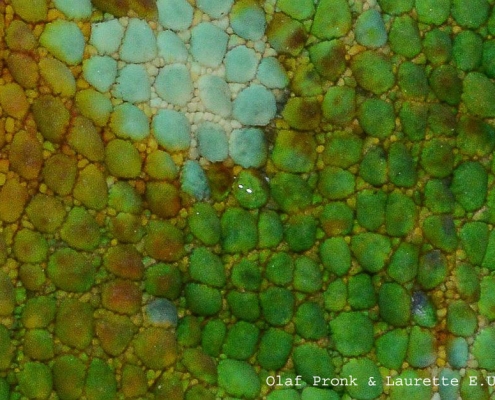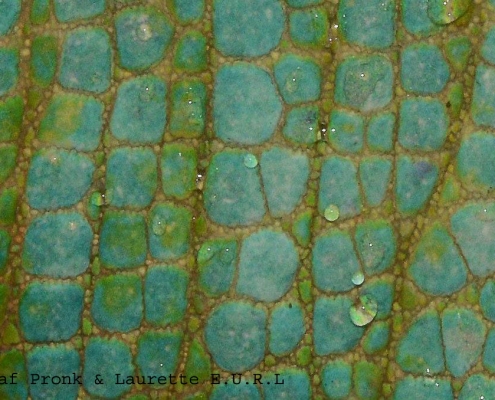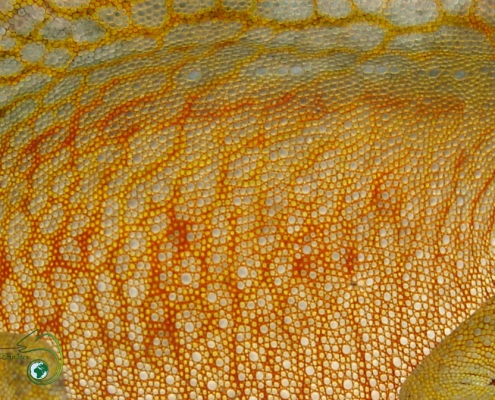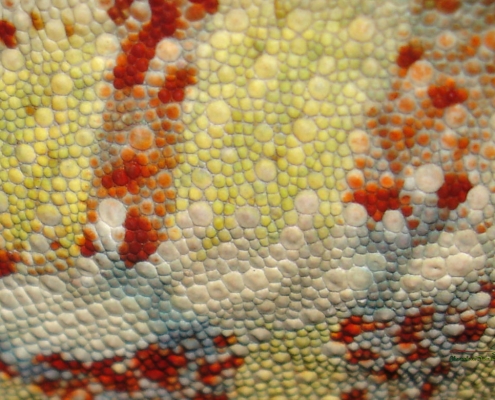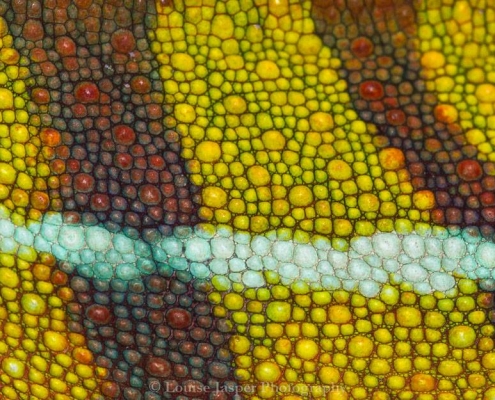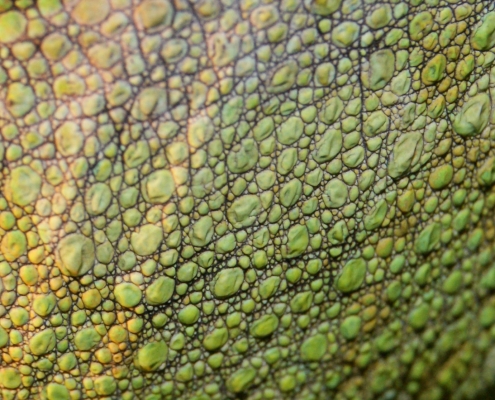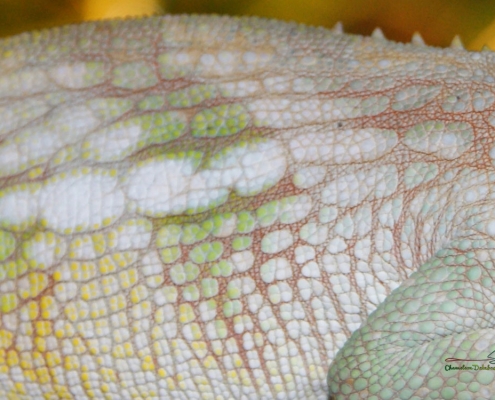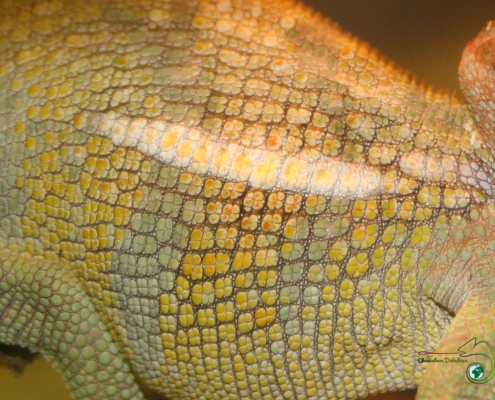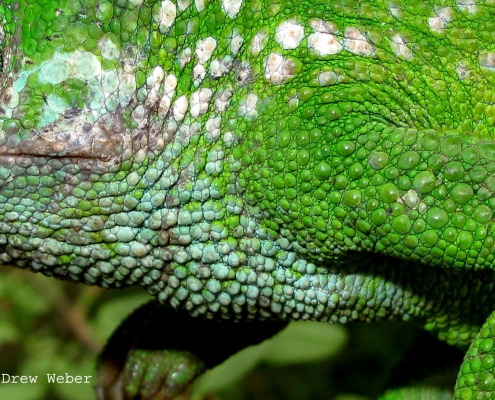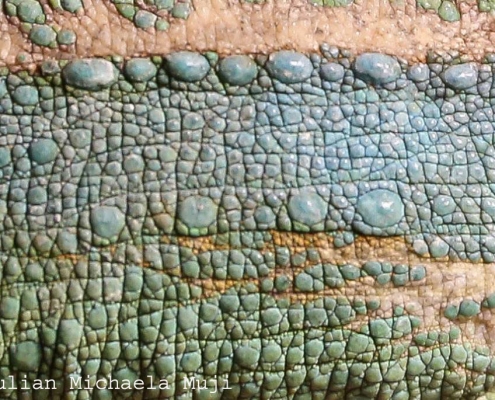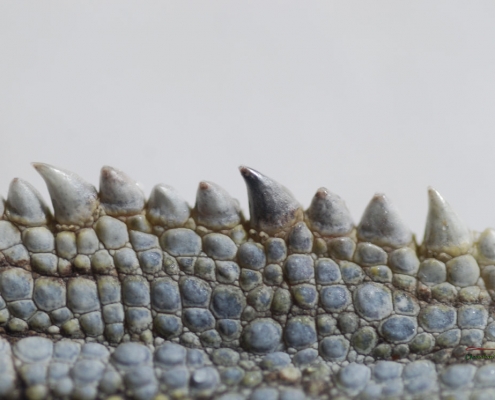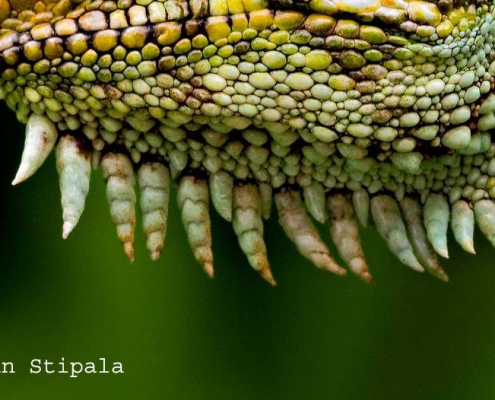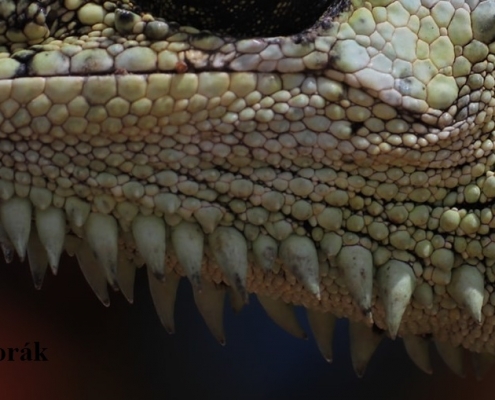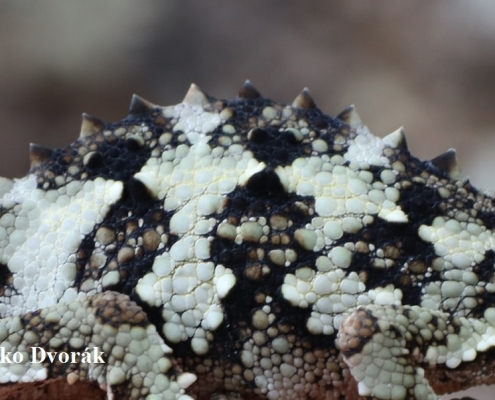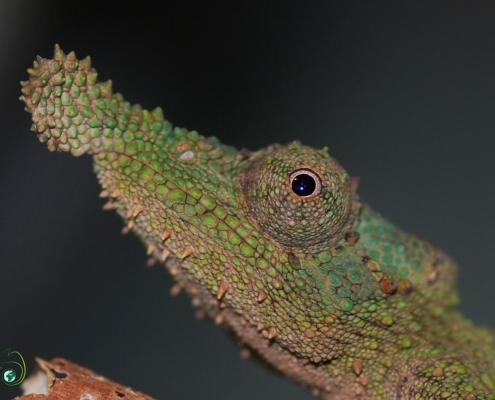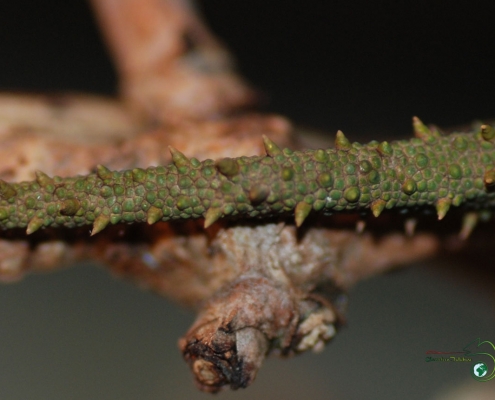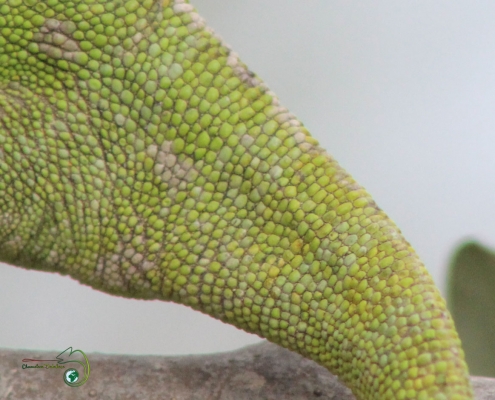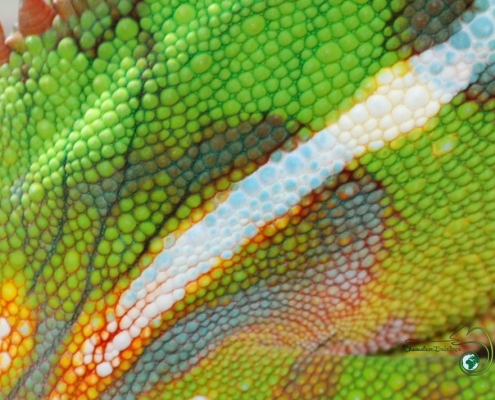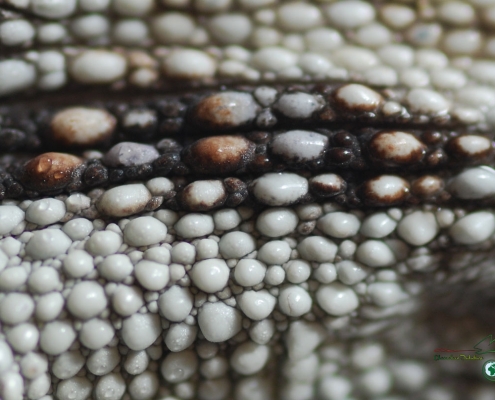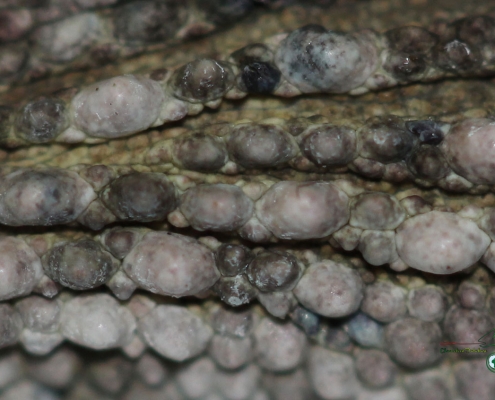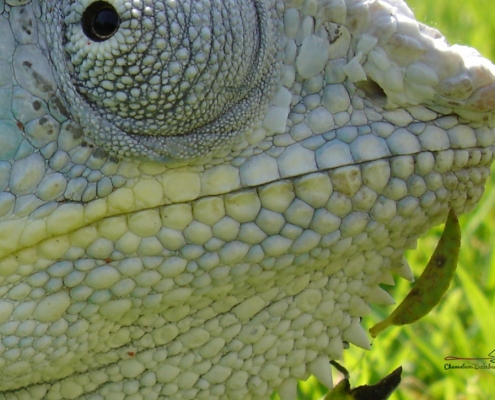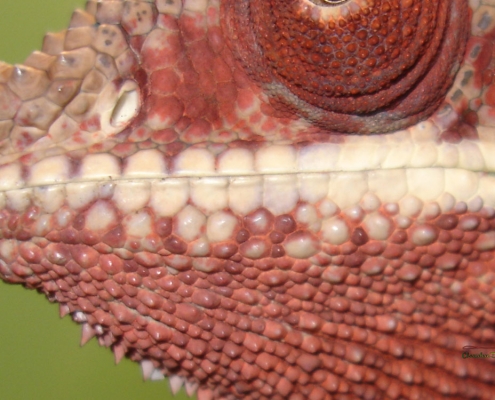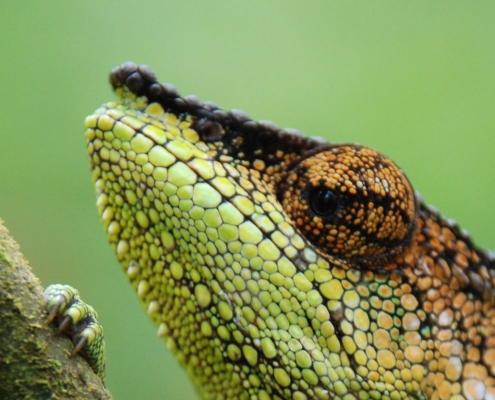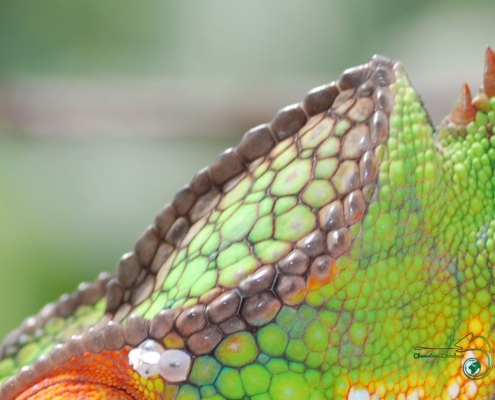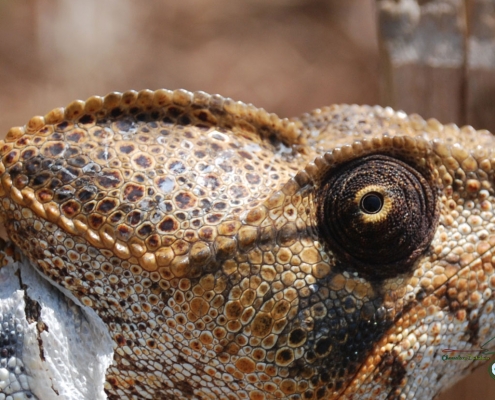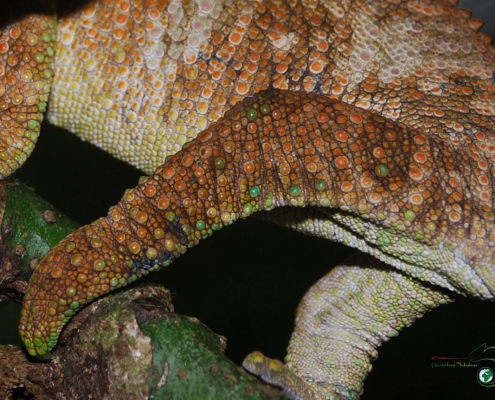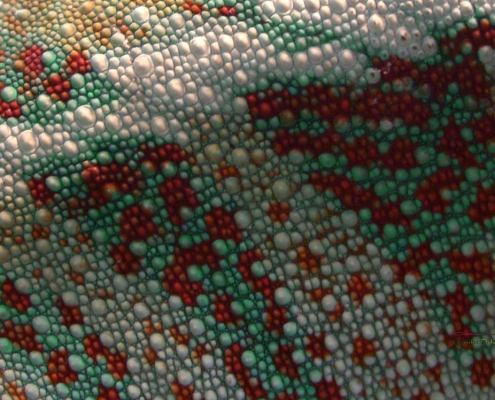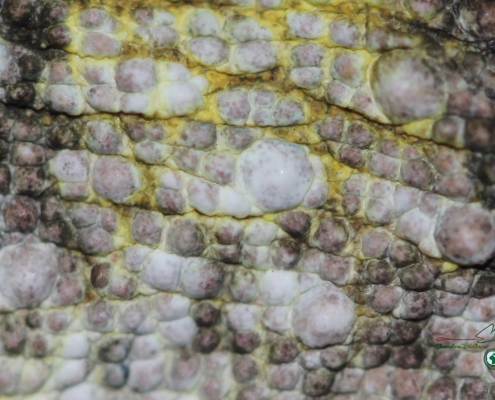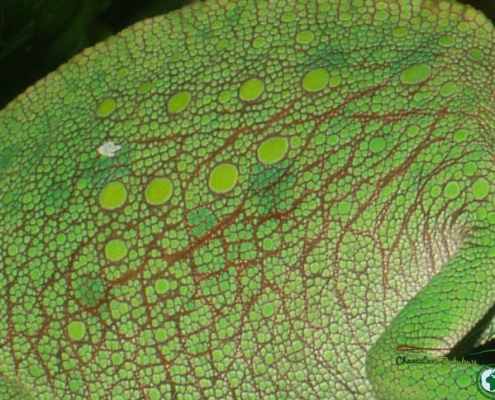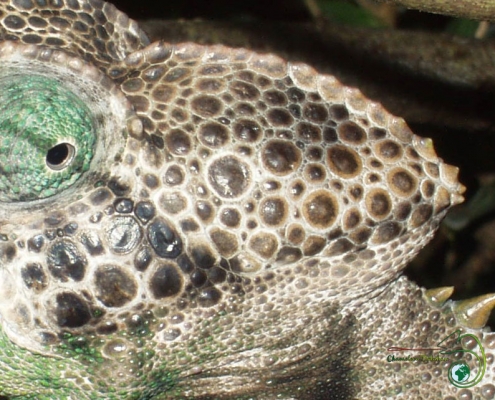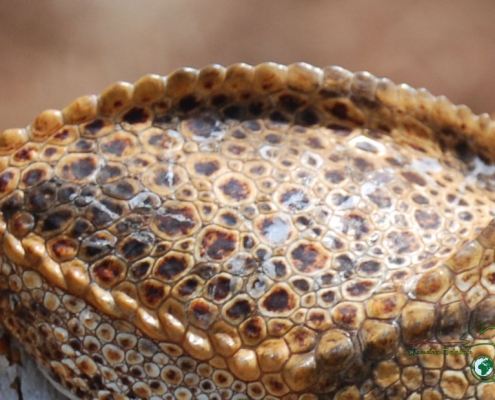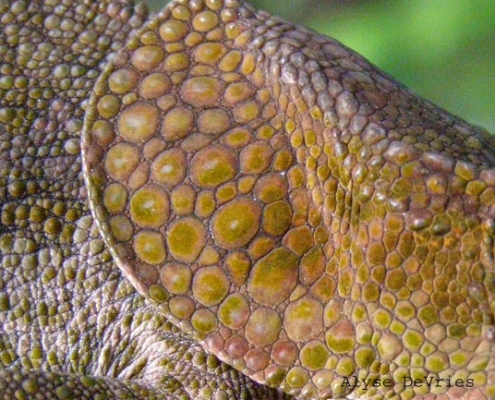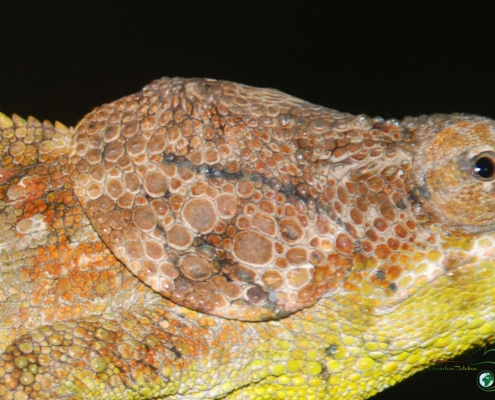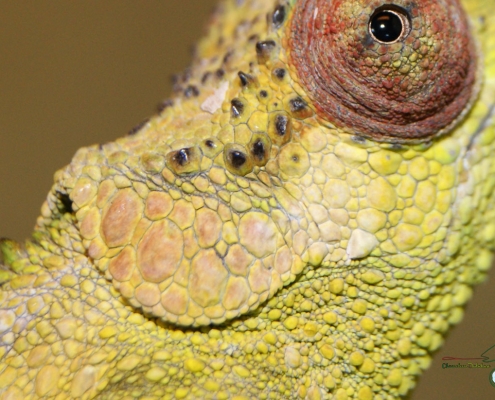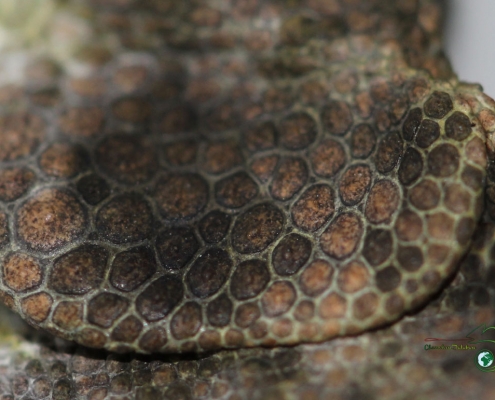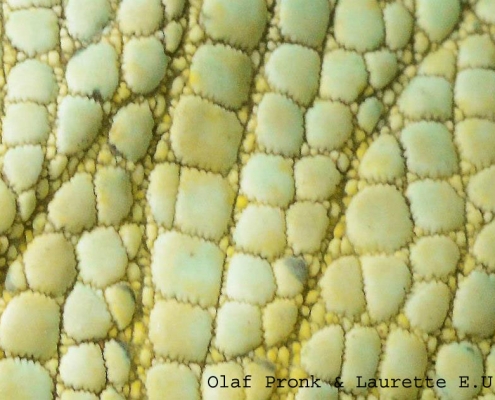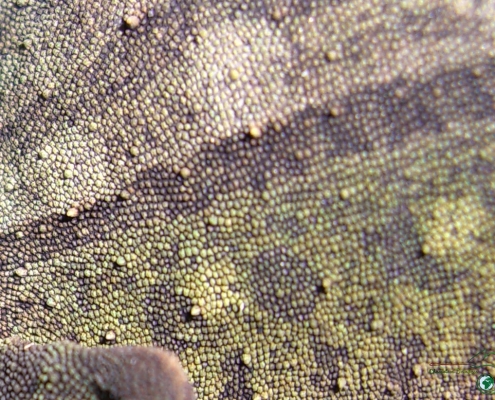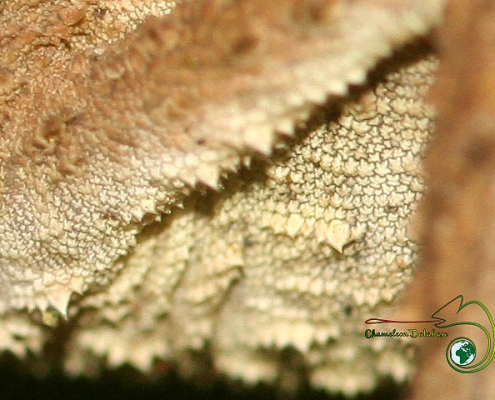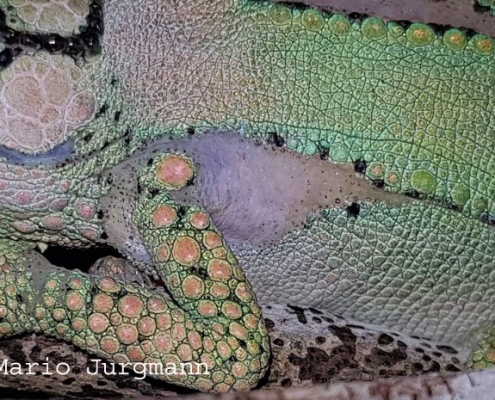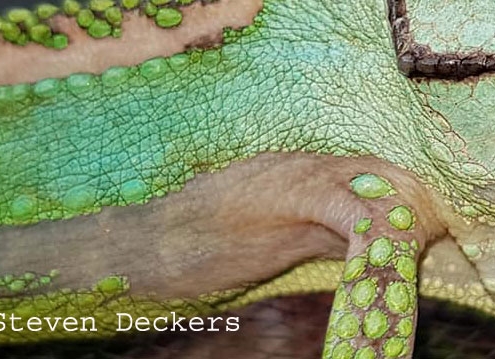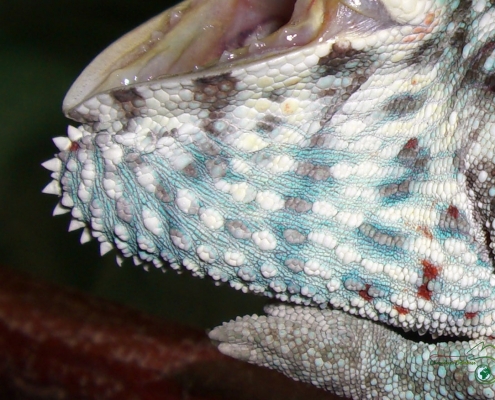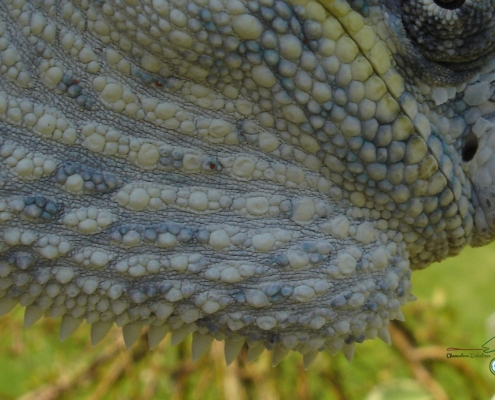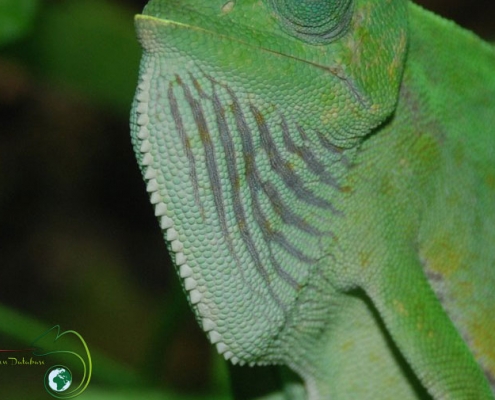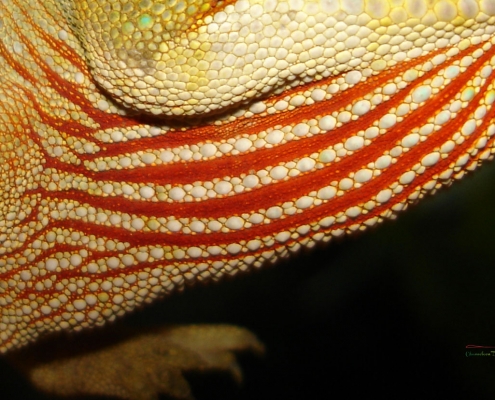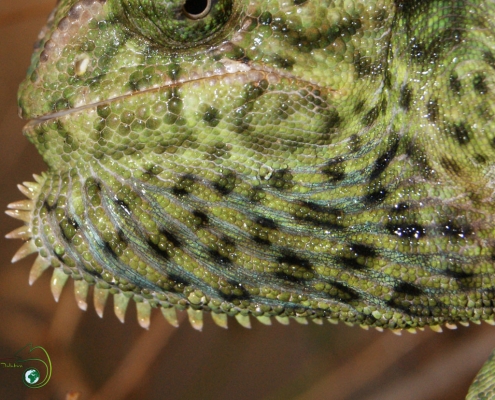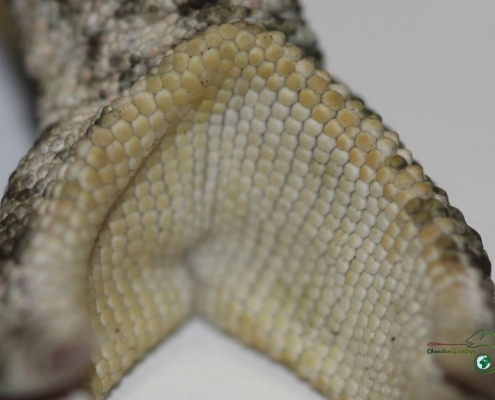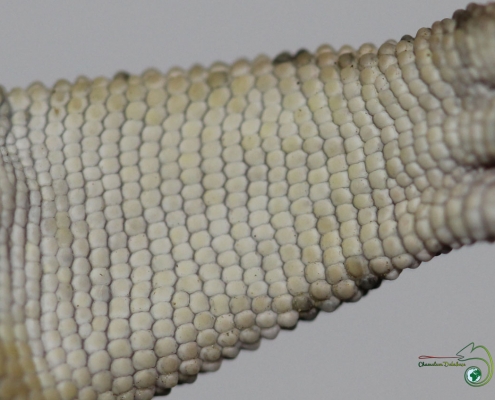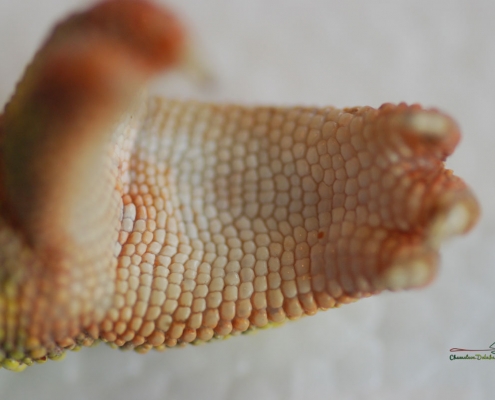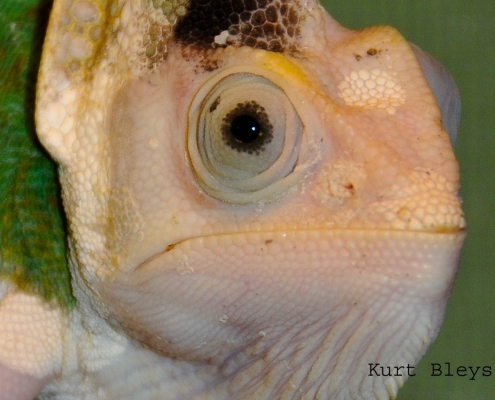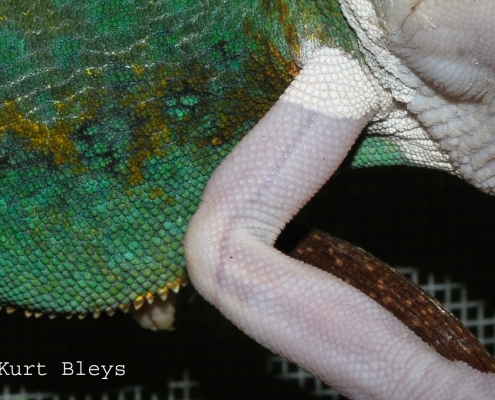Scalation
The skin of chameleons is covered with several different types of non-overlapping scales, all of which contain keratin.
They often contain a mixture of several types of flat, lenticular or granular scales.
The scalation is characterized by the shape and size of the scales, but this may vary according to various authors.
In general, there are two types of ‘standard’ scales in chameleons.
Scales of the same shape and size are called homogeneous scales. Alternatively, scales that vary in size and shape are called heterogeneous scales.
Conical scales:
Conical scales, are cone shaped and often called “cones”. They are mostly found on the dorsal and gular crests, but also on the head crests, throat, rostral processes, tail and flanks.
Granular scales:
Granular scales are small granular-shaped scales. They can be found between larger scales, in small patches or as the majority of the scalation.
Labial scales:
These scales are also called crescent scales and they are found around the mouth in all species. The scales are semicircular and placed in a single row, so they form ‘lips’.
Keeled scales:
Keeled scales have a ridge down the middle. They are found on the tails of some Brookesia species.
Tubercular scales:
Some authors use the term “tubercles” to describe several types of body scales (Tilbury 2010).
Tubercular scales are rounded projections and are mostly found on the cranial crest.
Lenticular scales:
Lenticular scales are rounded scales, being highest at the center of the scale. They are mostly found on the flanks, but can also be found on the head, limbs and tail.
Plate-like scales:
Plate-like scales are rounded and flat scales. They are found on the casque, occipital lobes, rostral protuberances and flanks. They can vary in size and are often surrounded by smaller scales, such as granular and lenticular scales.
Polygonal scales:
Polygonal are also known as stellate scales. (Tilbury 2010, Necas 2004). They often have a star-shape that interlocks with other scales and are found on the flanks.
They are mostly seen as a heterogeneous scalation in, pygmy chameleons.
Some species have small areas of bare skin, with no scales (e.g. Bradypodion damaranum). In the case of Bradypodion damaranum, the skin area varies in size and is located behind the foreleg. In some species, skin areas are also seen, beginning behind the neck and extending along the upper flanks (paravertebral zone), but may also be seen on the limbs and between the larger scales.
In some species, an inflatable sac or pouch is present and connects to the trachea.
The gular pouch often consists of rows of scales, called gular folds (plicae gularis).
Between these folds, is the interstitial skin, often appearing in bright colors, such as red, blue, yellow, white, green or black. These colors are displayed, when the gular pouch is inflated, e g. when the chameleon feels threatened.
The scalation on the soles and palms of the feet in chameleons are usually rounded scales and have a smooth look.
In Archaius tigris, the scales on the palms are similar to the ones seen in geckos, as they have evolved to live in vegetation with smooth surfaces, such as bamboo.
In Brookesia, Palleon and Rieppeleon, the soles of the feet, are more spiny in scalation.
Translucent genes, sometimes called piebald, are not really considered a ‘type of scale’, but are a mutation in the genes, resulting from the lack of pigmentation in the skin. The translucent mutation has a co-dominant trait in the genes.
This means that there are homozygotes that exhibit much of the gene (height translucent) and heterozygotes that exhibit a small amount of the translucent gene (low translucent).
As the translucent gene is not dominant or recessive, it works somewhat differently.
Two ‘high’ translucent chameleons mating, will result in 100% occurrence of high translucent offspring
Two ‘low’ translucent chameleons mating, will result in 25% normal, 50% ‘low’, and 25% ‘high’ translucent offspring.
A ‘high’ translucent gene-carrying chameleon breeding with a ‘normal’ one will result in 100% low translucent offspring.
A ‘low’ translucent gene-carrying chameleon breeding with a ‘normal’ one will result in 50% normal and 50% ‘low’ translucent offspring.
In chameleons, this is mostly seen in Chamaeleo calyptratus calyptratus, but is also known to occur in other species, such as Kinyongia matschiei.
Even though this mutation in the genes occurs naturally, some breeders in the hobby have purposely bred animals with these mutations in order to produce color variations in the offsprings. In the case of Ch. calyptratus calyptratus, a male and two females were found in the wild in Yemen, and exported to Europe. These three wild-caught animals were the foundation of all the translucent animals we see in captivity today. Since these animals lack pigmentation, there has been a lot of concern about their health, especially regarding UV absorption. Because of these concerns, it is debatable whether it is even ethical to breed these animals in captivity.
Source:
Books:
Chamaeleonidae. By J.J Klaver & W.Böhme.
Chameleons: Nature’s Hidden Jewels. By Petr Necas.
Chameleons of Africa. By Colin Tilbury.
The Biology of Chameleons. by Krystal A. Tolley (Editor), Anthony Herrel.
Publications:
ANANJEVA. N.B- 1991- the skin sense organs of some Iguanian lizards.
Picture copyright:
Alyse Devries.
Chameleondatabase.com
Drew Weber.
Jan Stipala.
Julian Michaela Muji.
Kurt Bleys.
Louise Jasper. Flickr.
Mario Jurgmann.
Olaf Pronk.
Peťko Dvorák.
Steven Deckers.
Edited by Paul Freed.

